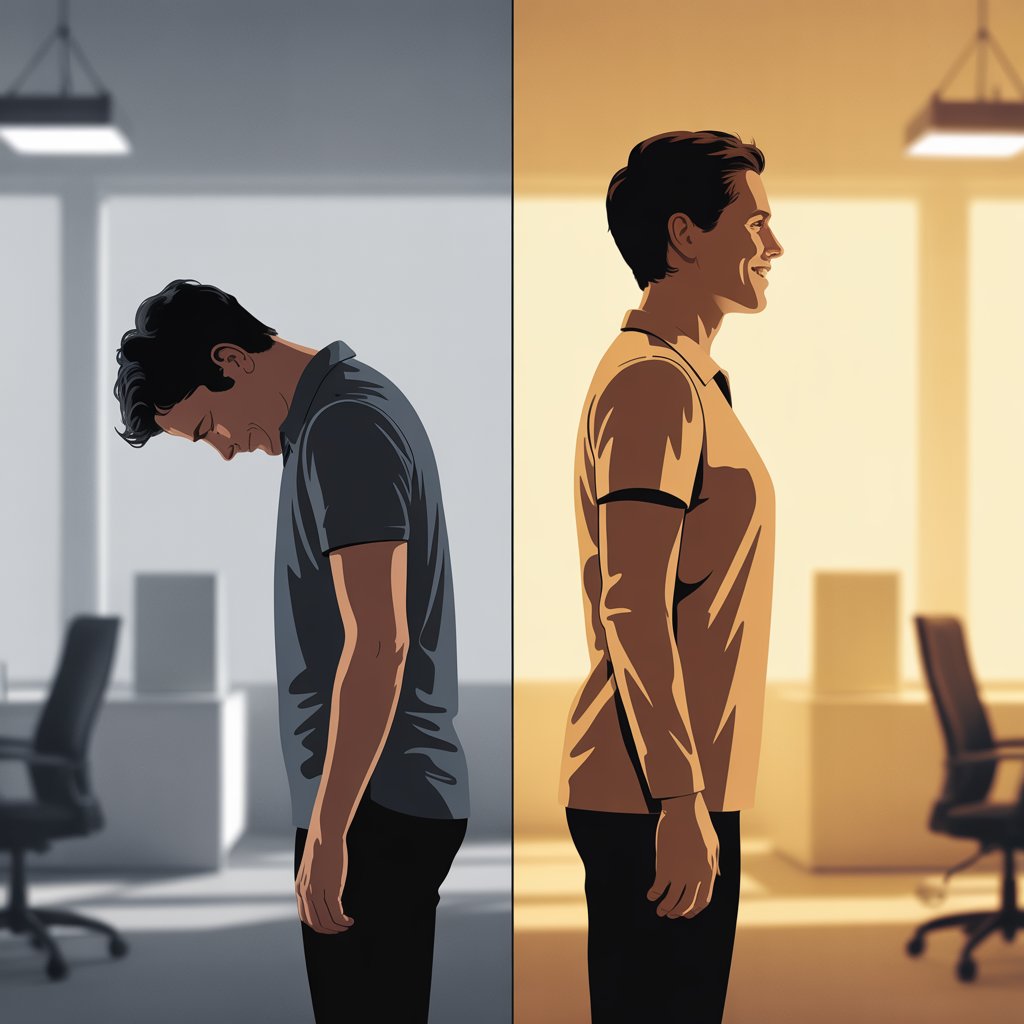When you’re feeling down, your shoulders slump forward. When you’re confident, your chest naturally lifts. While we’ve long observed this connection between posture and emotion, groundbreaking research has revealed it’s not just that your mood affects your posture—your posture is actively shaping your mood in real-time through a neurological feedback loop. A fascinating study from Columbia University found that maintaining certain spinal positions for just two minutes triggered measurable changes in hormone levels, with upright postures increasing testosterone by 20% and decreasing cortisol by 25%. These hormonal shifts directly influenced participants’ emotional states and decision-making processes, suggesting that your spine position isn’t just reflecting your mental state—it’s actively creating it.
What neuroscientists now call “embodied cognition” reveals that this posture-mood connection works through multiple pathways simultaneously. When your spine assumes a slumped position, lung capacity decreases by up to 30%, reducing oxygen flow to your brain and triggering subtle stress responses. Meanwhile, this position compresses certain spinal nerves while stretching others, altering the signals traveling to your brain’s emotional centers. Perhaps most fascinating is the discovery that specialized neurons in your brainstem are constantly monitoring your posture and using this information to regulate your mood-related neurotransmitters. Dr. Lisa Feldman Barrett, a neuroscientist at Northeastern University, explains: “Your brain is constantly asking ‘How am I doing?’ and looking to your body posture for answers, then adjusting your emotional state accordingly.”
This bidirectional relationship creates both challenges and opportunities. The average American now spends 70% of waking hours in a forward-head, rounded-shoulder position—what researchers call “iHunch”—which studies link to increased depression and anxiety. The good news? Targeted postural interventions show remarkable effectiveness for mood regulation. A 2021 study in the Journal of Behavior Therapy and Experimental Psychiatry found that participants with moderate depression who received posture-focused care showed greater improvement than those receiving only conventional treatment. However, attempting posture correction through willpower alone typically fails because structural misalignments in your spine create physical barriers to maintaining proper alignment. This is where chiropractic care becomes essential—by correcting these underlying structural issues, your body can more easily adopt mood-enhancing postures, creating a positive spiral where better alignment leads to better mood, which further supports better posture. Your spine isn’t just holding you up; it’s literally shaping how you experience the world emotionally each day.







